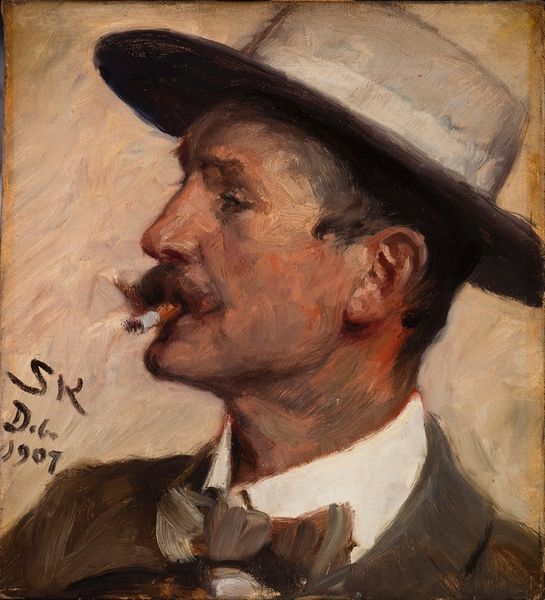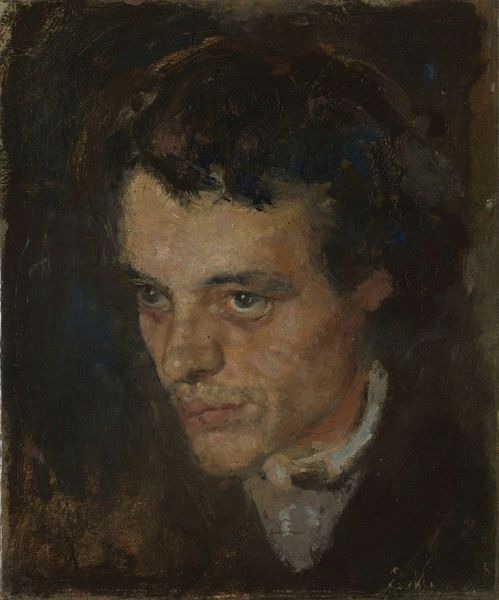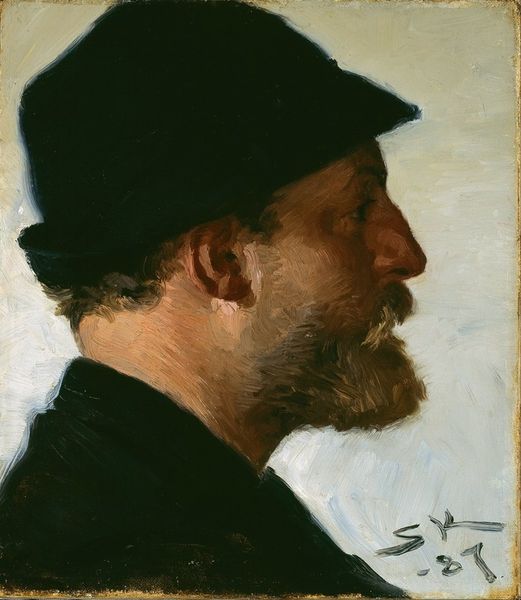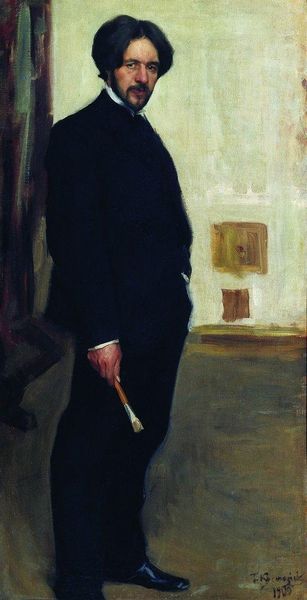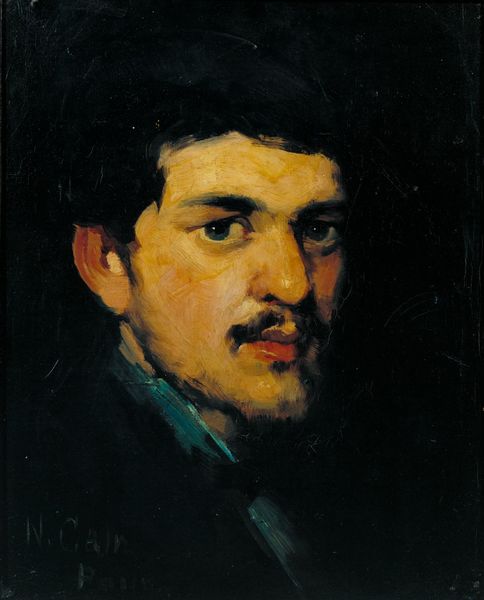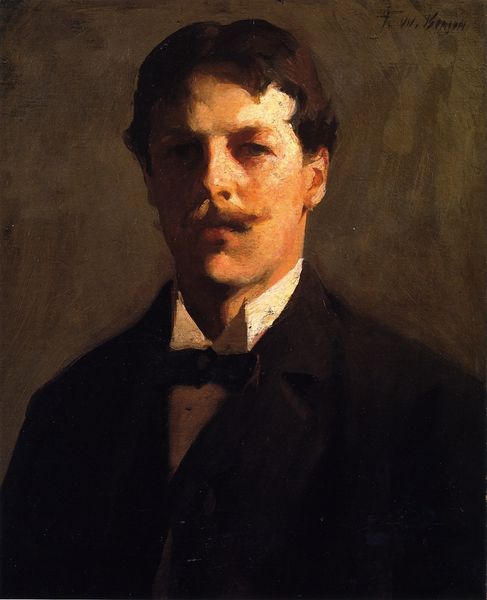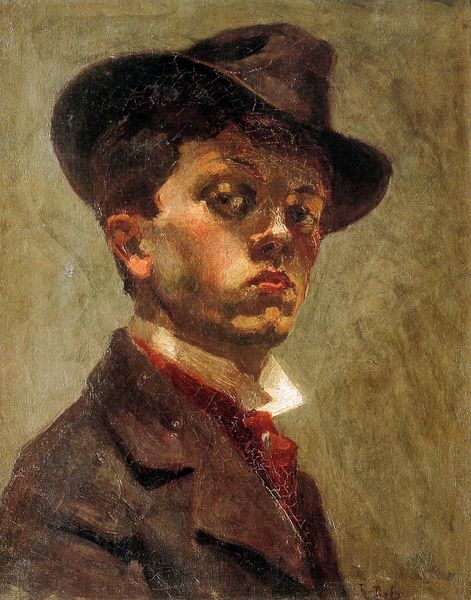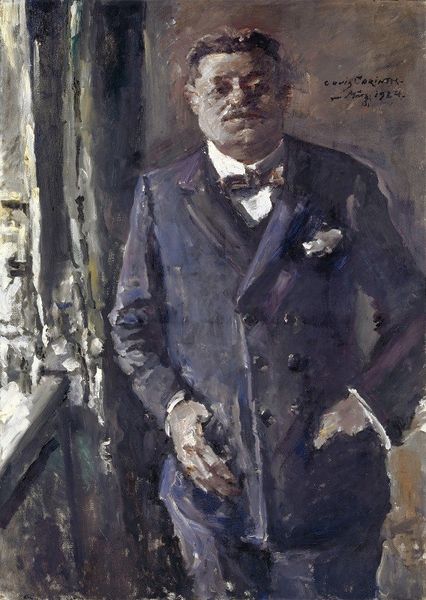
oil-paint
#
portrait
#
impressionism
#
oil-paint
#
oil painting
Copyright: Public Domain: Artvee
Curator: Here we have Peder Severin Krøyer's "Carl Locher," an oil painting completed in 1885. Editor: My first thought is how raw the brushwork is; you can almost feel the texture of the paint, giving a sense of immediacy and physicality to the portrait. Curator: Indeed, it's Impressionistic in that sense. The application of paint definitely signals that, and yet it also feels very personal. Krøyer's choice to portray Locher in profile evokes a sense of observation, as though he’s capturing a moment of contemplation. It raises questions of their relationship and Krøyer's intention in presenting Locher this way. Was this a depiction that considered the patriarchy, brotherhood, and mutual struggles among the men, but excluding other communities of artist around the community? Editor: Thinking about the materials, I'm curious about the pigments he used. The limited palette emphasizes earth tones, drawing attention to the subject’s face and form. Was this limitation intentional? How much did pigment production and distribution play into the aesthetics of the period? It's worth noting too, the way the artist allows the white of the primed canvas to come through and breathe. It feels intentionally understated, in terms of how much he's manipulated and applied the materials, that is. Curator: Absolutely. It opens up avenues for examining issues around artistic labor and identity at the time. The portrayal resists grandiosity and challenges dominant visual regimes which often elevated men. I appreciate your thinking about what Krøyer chooses to paint *and* chooses not to. Editor: Reflecting on the artistic and material aspects gives another dimension to the narrative. We are forced to recognize art making not as something borne from some form of ephemeral, almost divinely granted creativity but as labor that is dependent upon resources. Curator: Ultimately, looking at "Carl Locher," I'm reminded how crucial it is to contextualize the portraits, and think more inclusively when exploring its multiple historical narratives, acknowledging that art history’s selective record needs careful and intersectional reading. Editor: Yes, recognizing these elements allows us a deeper understanding of art's ability to reflect broader socio-economic structures.
Comments
No comments
Be the first to comment and join the conversation on the ultimate creative platform.

